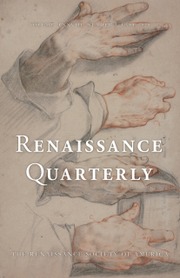This well-researched, richly detailed, and beautifully written study will be of great interest to American and British scholars of the Restoration in England and its colonies. Professor Weimer convincingly argues that between 1660 and 1667 New England Puritans resisted Charles II’s attempts at arbitrary rule by developing a multifaceted constitutional culture upon which they continued to rely in future conflicts with the Crown, notably during the Glorious Revolution and the American Revolution. Her skillfully organized presentation provides a roughly chronological narrative in which each chapter also focuses on a particular aspect of her story: shadows (of regicide), news (correspondence, prodigies, rumors), courts (loyalism, sedition), churches (fast days, sermons), frigates (the arrival of royal commissioners), towns (petitioning), propositions (self-governance), Boston (appeals court), borderlands (Maine, Narragansett, Piscataqua), crown (divided sovereignty), and impressions (constitutional legacies).
Weimer shows that while most New England colonists accepted the Restoration monarchy, a broad alliance—including governors John Endicott (to 1665) and Richard Bellingham, members of the Council and the General Court, other magistrates, and numerous clergymen—insisted that the colonial charter Charles I granted in 1629 guaranteed self-governance to freemen (church members with full political rights). In 1637 New England had resisted the king’s demands that they surrender the charter and accept a royal governor. Deriving inspiration and validation from that success, as well as sermons, fast days, prodigies, wonder stories, and belief in their own election, they remained steadfast in the 1660s.
Careful to avoid defending the execution of Charles I, they nevertheless provided sanctuary to the regicides Edward Whalley and William Goffe. They deflected interference from local royalists and Quakers, negotiated tricky relations with local Native Americans, and defied royal commissioners Richard Nicholls, Robert Carr, George Cartwright, and Samuel Maverick, who arrived with four armed frigates in 1664 to impose royal control. By the resolution of August 1664, the colonists swore to maintain their existing form of government, and by the subsequent declaration, in September, magistrates assured colonists they had the right to make their own laws. Between 1664 and 1665 they produced a volley of petitions and letters to the king, the Lord Chancellor, the Earl of Clarendon, Secretary of State William Morrice, and other officials, defending their political, religious, and economic rights. They also defeated, via a spectacularly provocative declaration by trumpet, the creation of an appeals court, and defended Piscataqua, Maine, and Narragansett against the commissioners’ encroachment. In 1666, the colonists rejected the king’s demand that they send agents to court and allied with Native Americans against the commissioners, though they earned a measure of royal favor by providing masts for the Navy at a time when the Crown was embroiled in the Second Anglo-Dutch War, conflict with Scottish Covenanters, and trouble in the West Indies.
In effect, New England colonists compelled the king to acquiesce in divided sovereignty. This allowed them much greater participation in government than they would have had in England, and it allowed them to resist the Book of Common Prayer and other features of the Church of England at a time when the ill-named Clarendon Code was restricting religious practice in the mother country. While it is not necessary to resurrect Whig theory or old notions of salutary neglect to explain what happened in New England, the colonists did get used to limited control from Westminster. They drew upon their constitutional culture during their struggles against James II and Governor Edmund Andros during the short-lived Dominion of New England from 1686 to 1689. Moreover, the ideals they espoused and the practices by which they defended them persisted into the eighteenth century and do much to explain why resistance to George III was so strong in New England during the American Revolution. While it is important, as Weimer notes, to remember that opposition to monarchy in and of itself developed only on the eve of the Revolution, New England’s dedication to divided sovereignty was over a century old by that point, and, as it turned out, impossible to eradicate. Weimer not only illuminates the history of Restoration England and New England, but she also allows us to trace the roots of the revolutions of 1688 and 1776 to the very early years of colonial history. In every respect this is a valuable book.


